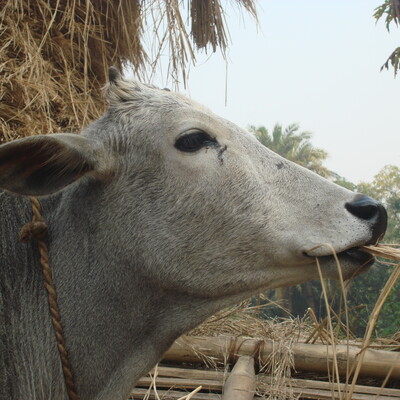
Vaccines against this year’s novel (and world-changing) coronavirus are already in development and being tested—Good news from Nobel Laureate Peter Doherty
Positive news!
While some COVID-19 surges are now ‘baked-in’, and we must prepare ourselves for more sickness and deaths, the viral curves should flatten with appropriate measures now being introduced in many countries, and several different vaccines are being developed and already being tested, says Nobel Laureate Peter Doherty.
Australian veterinary and medical immunology researcher Peter Doherty won the 1996 Nobel Prize in Physiology and Medicine. Now based in Melbourne, Doherty is patron of the the Peter Doherty Institute for Infection and Immunity, a joint venture between the University of Melbourne and the Royal Melbourne Hospital. Doherty is also a former board member and current patron of the International Livestock Research Institute (ILRI).
Peter Doherty won the Nobel prize in medicine for his work on the immune system.
“I’m a disease and death guy,” is how he explains it to the lay person. . . .
‘[H]e expects that the measures introduced this week [in Australia] will work: “With a lag of a week or so, because the average time to [display] symptoms is five to six days and maybe longer,” and only people showing symptoms have been allowed tests so far.
So a short-term surge is already baked in.
‘”I think the steps announced by the [Australian] Prime Minister and the premiers will dampen this down. I would expect to see the curve flatten in the next couple of weeks, see it start to come down,” he says.
‘Governments have said that they aim to “flatten the curve”, meaning to slow the rate of new infections, by controlling gatherings, closing non-essential businesses and ordering social distancing.
‘”That will mean a lot more people will survive because they will have access to ventilators and proper clinical care over the next 12 to 18 months” in the intensive care wards of the hospital system while awaiting the arrival of a vaccine. . . .
‘”It’s now a matter of time, of numbers and of human behaviour”, says Doherty, patron of the Doherty Institute at the University of Melbourne.
Professor Doherty, who trained as a vet, is involved in strategy and advice on the research effort, including the search for a vaccine.
‘On government support for urgent new research, he says: “Federal and state governments are doing pretty much everything asked of them to drive this research, clinical and diagnostic effort forward.”
‘The Doherty Institute, one of the world’s research leaders and the first lab outside China to decode the COVID-19’s structure and distribute the data to labs worldwide, has received federal and state funding for research and “a lot of money” from private donors and philanthropists, he says. . . .
‘We are moving faster on this than on anything in human history. One vaccine in the US is already on trial, it’s already gone into people’s arms, and the University of Queensland vaccine is being progressed here and with CSIRO,’ he said.
‘Batches are being made by CSIRO now on a scale that will allow us to move rapidly to animal trials and then human trials.’ Indeed, says Professor Doherty, ‘it’s already in animals and is progressing well’.
The US and Australian vaccines ‘are two completely different technologies, very new, and there are many more being trialled around the world.’ New ideas are being offered every day, he says.
Testing of any new vaccines is needed, even though it will slow the process, says Doherty.
‘There’s some concern that if we don’t tailor this right, you might make it worse in some conditions, so there has to be careful testing.’
Expert opinion commonly specifies a 12 to 18-month wait for an effective vaccine to be widely available.
‘I’m hopeful that we in the global community could be quicker, but that might just be my optimism.’
‘Other urgent clinical work is needed, not just a vaccine, he says. For example, “we need a rapid antibody test for people who’ve had the virus and recovered”. . . .’
While Professor Doherty is deeply involved in all this lab work, he isn’t in the lab himself. He’s working from home.
“People like me, 79 years old and with high blood pressure, still have to be very, very careful.”
He should know.
Read the whole article, Nobel Prize winner says virus curve will flatten in ‘couple of weeks’, by Peter Hartcher,
Sydney Morning Herald, 24 Mar 2020.
Watch a 2-minute video, Peter Doherty on Zoonotic Plagues, that ILRI made in 2016, in which Doherty speaks to camera, ‘prophesizing’ about the ‘global threat’ posed by zoonotic diseases such as the coronavirus disease that appeared in Dec 2019 in Wuhan, Hubei Province, China, and is now sweeping the globe:
‘These things can go global very rapidly’, Doherty says, ‘if they happen to jump from animals to humans. . . .
‘It’s something we need to be constantly watching as we realize that there are many more infections out there that could potentially damage us. . . .’
Read a recent opinion piece on the same subject by ILRI Director General Jimmy Smith: We need a new approach, or another coronavirus is inevitable, ILRI.ORG, 2 Mar 2020.
Read about similar ‘prophesizing’ by Bill Gates: What keeps Bill Gates up at night? A (highly prescient) 2015 article spells out our COVID-19 challenges today, ILRI.ORG, 8 Mar 2020.

















